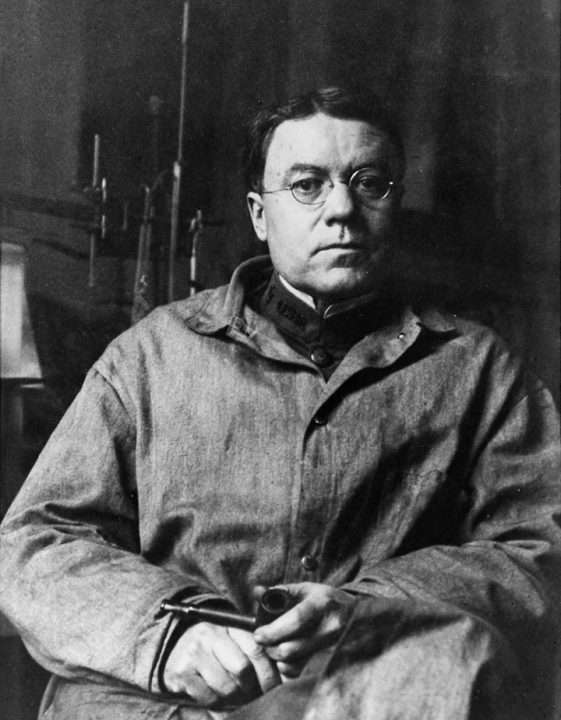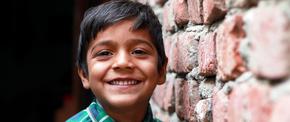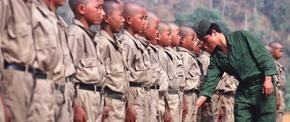The views expressed in our content reflect individual perspectives and do not represent the authoritative views of the Baha'i Faith.
Many of us learn fairly early in life that we have only two potential reactions available to us when we encounter aggression or oppression: fight or flight. But what if a third possible response exists?
Everyone learns the fight-or-flight paradigm on the playground in elementary school. When a bully hits you, what are you supposed to do? You can either run, or hit back, right?
Some parents advise their children to leave and tell the teacher – the flight option – thereby relying on whatever system of justice the school may or may not provide. Other parents count on the old eye-for-an-eye response, which means counseling their children to fight back, returning violence for violence.
However, as the Baha’i teachings suggest, an eye for an eye ultimately leaves the whole world blind. Revenge only repeats the original crime. Abdu’l-Baha, in the book Some Answered Questions, directly addressed this important human question:
Now, vengeance is reprehensible even according to reason, for it is of no benefit to the avenger. If a man strikes another, and the victim chooses to exact revenge by returning the blow, what advantage will he gain? Will this be a balm to his wound or a remedy for his pain? No, God forbid! In truth the two actions are the same: Both are injuries; the only difference is that one preceded the other. Therefore, if the victim forgives, or better still, if he acts in the opposite manner, this is praiseworthy.
More than a hundred years ago, in 1915, a Harvard physiologist named Walter Bradford Cannon labeled a limbic response in the brain the “fight-or-flight response.” His original research focused, however, solely on antagonistic encounters between animals, and measured just one biological variable, the amount of adrenaline excreted by the adrenal glands during those encounters. Cannon then proposed a theory, which he also called the fight-or-flight response, and applied it to all sentient beings, including humans.

That theory – which quickly became so popular that it turned into conventional wisdom – has since been heavily altered and modified as scientific understanding of the human body has increased. Scientists now usually call it the “stress response” – which better and more broadly defines an entire set of physical and emotional changes the human body makes in response to any threat or stress. Today we know from the many controlled studies done on both animals and humans that stress doesn’t only mean an aggressive confrontation – it can also include things like the body’s response to environmental factors like cold temperatures, altered salt intake, or even water immersion. However, while the relationship between the stress response and the body’s biological reaction has been the subject of a great deal of study, many mysteries still remain.
But unfortunately, the idea of the fight-or-flight syndrome seems to have extended itself far beyond Cannon’s original theory and intent. Today it has come to describe, for many people, the only two possible responses to a threat. If an aggressor or an oppressor approaches, that old understanding posits, you only have a binary, lesser-of-two-evils choice: run away or do battle. In both of those choices, at least one victim gets created – flight implies cowardice and further victimization; and using violence always creates at least two victims, the injured victim and the perpetrator.
The third way, constructive resilience, asks us to treat enemies as friends – which, if we succeed, leaves no victims.
The Baha’i constructive resilience approach does not mean that we should ignore our pain or invalidate social scourges like racism, but it does ask us to be lovingly constructive rather than destructive in all of our relationships. It asks us to immediately forgive our oppressors and recognize, at the same time, that we can be resilient in the face of oppression if we take a spiritual path. It replaces anger and violence with understanding and peace – which Baha’is believe will always prevail over the long term.
This third way requires courage – both the courage to stand up to an oppressor without fear, and the courage to actually return love for hate:
Act in accordance with the counsels of the Lord: that is, rise up in such wise, and with such qualities, as to endow the body of this world with a living soul, and to bring this young child, humanity, to the stage of adulthood. So far as ye are able, ignite a candle of love in every meeting, and with tenderness rejoice and cheer ye every heart. Care for the stranger as for one of your own; show to alien souls the same loving kindness ye bestow upon your faithful friends. Should any come to blows with you, seek to be friends with him; should any stab you to the heart, be ye a healing salve unto his sores; should any taunt and mock at you, meet him with love. Should any heap his blame upon you, praise ye him; should he offer you a deadly poison, give him the choicest honey in exchange; and should he threaten your life, grant him a remedy that will heal him evermore. Should he be pain itself, be ye his medicine; should he be thorns, be ye his roses and sweet herbs. Perchance such ways and words from you will make this darksome world turn bright at last; will make this dusty earth turn heavenly, this devilish prison place become a royal palace of the Lord – so that war and strife will pass and be no more, and love and trust will pitch their tents on the summits of the world. – Abdu’l-Baha, Selections from the Writings of Abdu’l-Baha.
“Meet him with love,” Abdu’l-Baha wrote, giving us that third Baha’i way to respond to an oppressor – not only with nonviolence, but with constructive resilience.

















Comments
Sign in or create an account
Continue with Facebookor